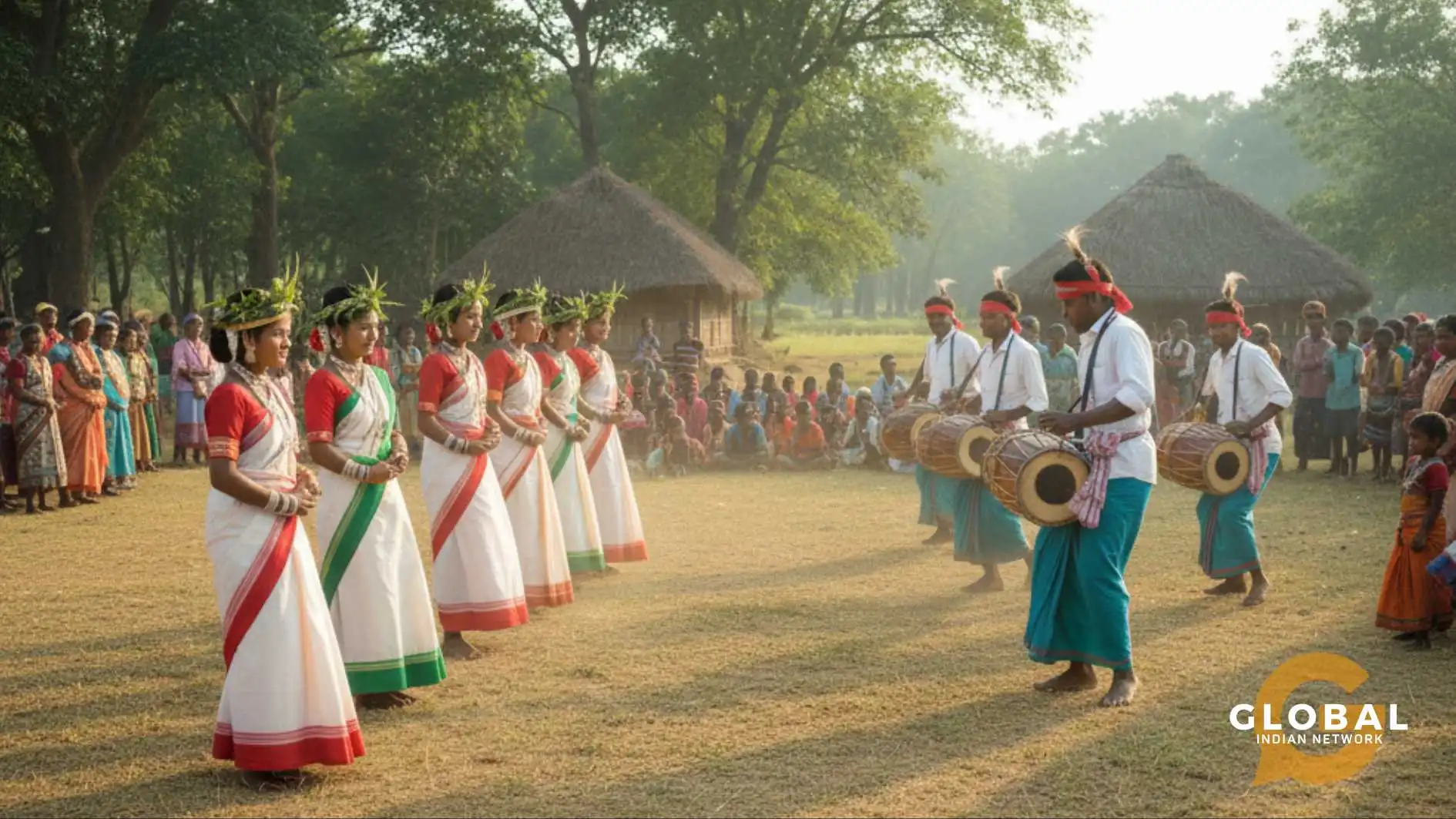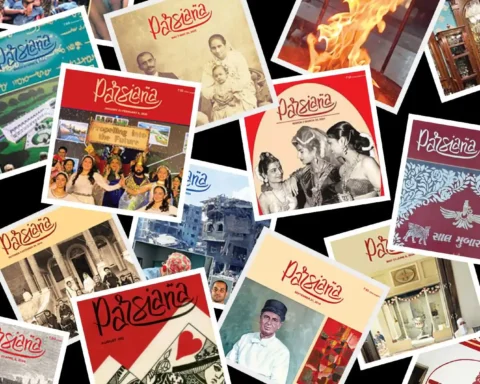The Santhal tribal culture is a rich and living segment of the Indian native culture. The Santhals have kept their own language, art, and rituals and have been centuries rooted in nature, tradition, and communal living. The culture of the Santhal tribe, with its festivals, music, and group spirit, is still shining in the face of modern times, which demonstrates that a strong identity still exists in the spirit of the tribe.
Table of Contents
Understanding the Culture of the Santhal Tribe
The Santhal tribe culture has thrived for centuries in eastern India. Santhals are also one of the largest local communities in the area. They were based on their traditions of green lands in Jharkhand, West Bengal, and Bihar. In spite of the traditional background, the culture of the Santhal tribe has been associated with resilience, adaptability, and diversity.
Santhal folklore remembers the mythical world named Hihiri-Pipiri, the fundamental part of the culture of the Santhal tribe. Oral traditions and myths have been at the forefront of imparting beliefs and customs that have enhanced their culture. The fact that they traveled to the Hihiri-Pipiri, then to the Chhotanagpur plateau, going through troubles and population displacement, indicates that their culture is dynamic.
The population of the Santhal tribe is large, with more than five million members. Most people have moved to work, yet attachment to land is central to the culture of the tribe. Their economy and social life are based on agriculture, forestry, and handicrafts that ensure the culture survives in its everyday life.
Language and Literature: Heart of Santhal Identity
The Santhal tribe has a unique lingual tradition that defines the ways communication takes place. The language spoken by the Santhal tribe is Santhali, which plays a significant role in the culture of this tribe. Santhali is one of the indigenous languages of India that is written in the Ol Chiki script.
The appearance of Santhali in the Eighth Schedule of the Constitution emphasizes the growing popularity of the culture of the Santhal tribe in the mainstream society. Many Santhals speak regional languages such as Hindi, Assamese, and Bengali, which is common in bilingualism.

Social Structure of the Santhal Tribe
The culture of the Santhal tribe is characterized by a tight-knit community system. Equality, communal life, and proper traditions form the social organisation. The major social units are villages.
Administrative and religious roles are taken by the village headman, elders, and priests, who make sure that the traditional norms are upheld. Festivals, meetings, and rituals that are the core of the Santhal tribe culture are held in the Akhara, which is a community space.
There are traditional assemblies that settle land and family disputes. The combination of hereditary leadership and consultative governance is unique and creates a different culture of the Santhal tribe among others. Santhal village leadership is an aspect that can be analyzed to reveal the significance of village leadership.
The Santhals still use the traditional mechanisms even after coming in contact with the Indian legal system. This style emphasizes the element of a slight social resistance, which is one of the characteristics of their culture and has enabled them to maintain their distinctiveness.
Occupations and Economic Practices
The major occupation is agriculture, which has been the core part of the Santhal tribe culture. Men and women contribute to farming, the rearing of cattle, and the harvesting of forest products.
Santhals move to industrial belts when in lean seasons, and they do not lose their connection with the Santhal tribe culture. The conventional art, such as bamboo flutes, drums, and paintings, is not only an economic resource but also a form of creativity among the Santhals.
The Banam and Tamak drums are among their handicraft, which forms a key part of Santhal culture. The culture of the Santhal tribe is supported by encouraging local businesses among Santhalis.
Religion and Spirituality of the Santhal Tribe
The Santhal tribe is strongly rooted in religion. Their spiritual world is dominated by nature worship, with sacred groves known as Sarna being the location where traditional rites were held.
Santhal ideologies are centered on the belief in bonga (spirits of nature), the spirits of ancestors, and the experts of the ritual known as Ojha. Sohoray, Baha Utsav, and Karam are some festivals that exemplify their faith and the rich culture of the Santhal tribe.
Virtually all Santhals remain true to their animist origins despite the impact of Hinduism and Christianity. Prosperity and protection rituals play a major role as they emphasize the spiritual aspect of the culture of the Santhal tribe.
The Arts: Painting, Music, and Dance
The Santhal tribe has an exciting culture through art forms. Santal paintings, which are frequently minimalistic, capture scenes of day-to-day activities, rituals, and celebrations. These paintings are a unique property of the culture of the Santhal tribe because they are made of handmade paper and natural colours.
The music accompanies vigorous dances with musical instruments- Tirio flute, Banam, Tamak, and Tumdak drums. The involvement of the community is essential, and dance and music are dynamic traditions that keep the culture of Santhals alive.
The art forms also support several people economically. The purchase of the Santhal art pieces contributes to the culture of the Santhal tribe and the greater tapestry of Indian culture.
Challenges Facing the Culture of the Santhal Tribe
Their is challenged by modernisation to a great extent. The traditional norms are endangered by assimilation, migration, and new cultural symbols. Santhals are becoming more exposed to mainstream society, and this may end up eroding the unique character of the culture of the Santhal tribe.
In addition, communal ethos is broken by the transition to a more individualistic practice. The loss of power of the traditional leaders is also an indication of social changes in the socioeconomic aspects of the Santhal tribe.
But revival activities organized by the communities, such as education, language promotion, and cultural documentation, are encouraging. The historicity of Draupadi Murmu becoming the first tribal President of India has earned pride and visibility, which has strengthened the need to make known the contribution made by those who continue to maintain the culture of the Santhal tribe.
Preserving the Culture of the Santhal Tribe
The problem of protecting the culture needs to be multilateral. It is important to integrate their history, language, and arts into the curriculum and the media. Government policies are intended to safeguard cultural and linguistic rights.
The backing of Santhal festivals and businesses can guarantee sustainable economic models. To maintain their culture, there has to be documentation of the tribal history, folklore, and the practice of the people, which is to be passed on between generations.
Conclusion
The cultures of the Santhal tribe can serve as a sign of endurance, imagination, and the spirit of the indigenous people. Within the strains of the mainstream society and modernisation, the Santhal tribe culture remains alive to date, due to community initiatives and government interventions. The process of culture preservation of the Santhal tribe implies education, financial support, and strong respect for the traditions. By appreciating the importance of the culture of the Santhal tribe, the special heritage will continue to be given by the community to diversity in India for many years to come.

FAQs
What is the traditional culture of Santali?
The traditional culture of the Santali tribe is deeply rooted in their social harmony, community celebrations, and artistic expressions like singing, dancing, and storytelling. Their lifestyle revolves around cultural practices such as traditional festivals like Sohrai and Baha, vibrant folk music and dance, and the use of natural elements in their arts and crafts.
What is the tradition of Santhal?
Santhal traditions emphasise their connection to nature and communal living. They celebrate festivals with dance, music, and rituals, worshipping spirits and deities tied to natural elements. They worship a Supreme God, Thakur Jiu, along with various spirits and deities like the Sun God, Sin Bonga. Their traditional practices also include storytelling, crafting musical instruments, and creating vibrant tribal paintings.
Who are the Santhal tribes of West Bengal?
The Santhal tribe is the largest tribal community in West Bengal, accounting for over 50% of the state’s tribal population. Primarily residing in the districts of Bankura, Purulia, and Paschim Medini, they are traditionally involved in agriculture and are recognised for their vibrant festivals, music, dance, and unique artistic expressions.










[…] play a vital role in tribal development, but their efforts sometimes fall back due to many factors, such as a lack of […]